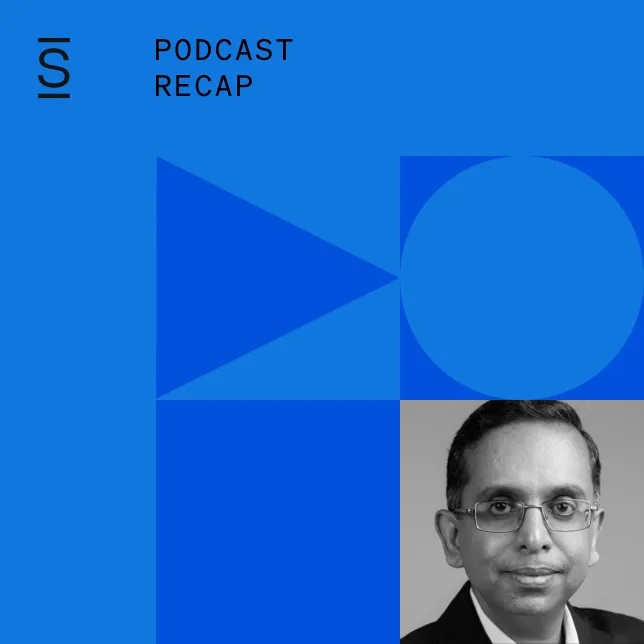Trust. It’s a word thrown around a lot. But how can you actually build trust in the workplace? The reality is that trust takes time to build and can easily be shattered. So what can you do? It’s all about your leaders.
“Trust equals consistency over time,” said Reid Hoffman. One of the core tenets of exceptional EX is trust. But what’s the role of leaders in fostering a positive workplace culture where this trust can build? It doesn’t happen organically. We sat down with Julia Christenson, U.S. Employee Experience Chair at Edelman, to explore the intricacies of employee experience and building trust in the workplace — and where employee recognition and good leaders fit in this mix.
To learn more, read on for key takeaways and listen to the full podcast!
Exploring the boundaries of EX
There are a number of common misconceptions about employee experience. It’s not one-dimensional but encompasses the entire employee journey — from recruitment to exit interviews.
At its core, EX is what it’s like to live somewhere. It’s the experience employees have in all aspects of their workplace.
It’s the language from day one with employee onboarding, the expectations, the work style, the values, the rituals, how employees are rewarded, the quality and effectiveness of internal communications.
During the pandemic, it became clear that an employee’s experience was influenced more than just what an employer could control. As employees sought more holistic support that traditionally transcended workplace walls, many leaders found themselves asking how they could foster a better experience.
Julia points out that while employers can provide opportunities for connection and socialization, personal external factors are often wild cards.
Overlooked areas of EX
When it comes to employee experience, a few critical areas often receive less attention:
Understanding individual meaning: Senior leaders tend to focus on broader organizational goals, often neglecting individual employee experiences. Understanding the workplace’s meaning to each employee is crucial for creating a fulfilling experience.
Taking a data-driven approach: Organizations may acknowledge the importance of employee experience but not invest the same level of rigor that they apply to consumer experience. It’s important to analyze EX data to truly understand how initiatives affect employees’ engagement and satisfaction.
Companies can create a cohesive culture that addresses collective and individual needs by articulating a strong employee value proposition and focusing on purpose.
Who owns EX?
The reality is that every person associated with an organization contributes to the experience at that place. The programmatic pieces of EX get fuzzy. As Julia recommends during this episode, you need someone to oversee who has a holistic approach.
And trust is central to success.
Understanding EX with The Trust Barometer
Julia shares insight from Edelman’s Trust Barometer report, an annual survey measuring trust across various sectors. The data is collected from a global mix of participants and analyzed to understand trends in trust between society, companies, governments and media – and what will build, promote and protect trust.
Trust is a mutual vibe.
When I think about trust between leaders and employees, a symbiotic relationship comes to mind. When the existence and actions of each party contribute to the building and sustaining of trust, then both parties derive benefits from such trust. Julia notes that transparent communication and involving employees in decision-making builds trust levels and contributes to positive organizational outcomes. This is particularly true when employees act as company ambassadors and share information on social media. “If an employee shares a piece of data on social,” she says, “it’s 11 times more likely to be amplified because there is the trust factor there.”
Creating a culture of trust
Consistent actions that align with the organization’s values and messaging builds trust.
Again, transparency is vital to build trust in the workplace. Employees are quick to recognize when they aren’t getting the full story. Julia suggests that if an organization knows its actions won’t match the messaging, it should stop and reassess.
Consistently aligning actions with communicated values is pivotal for sustaining trust and credibility.
Employees can easily see through language that tries to soften the truth. Julia says employees quickly pick up on phrases like “left for other opportunities” when referring to colleagues who were let go.
Acknowledge that employees are adults and can handle the truth. This can go a long way in building trust in the workplace. Even in challenging situations, open communication and transparency are key to maintaining trust within the organization.
Explore more strategies to build trust in the workplace
The power of employee recognition to build trust
If you want employees to trust leadership and each other, and actively engage within an organization, you must recognize effort.
Feeling seen, worthy and acknowledged is core to how an employee feels and to their desire to take action towards responsibilities.
Recognition should flow from every direction in the workplace. It’s not just about getting a pat on the back from the bosses, but also about appreciation from our teammates, peers, and even folks we know from different projects. It’s all about making sure everyone’s efforts get noticed.
Generational differences
When it comes to recognition, different generations within the workforce may respond in different ways. While older generations might value one-on-one recognition from managers, younger generations might prefer more public recognition — like via team channels or during meetings.
Your recognition strategies should be tailored. Customizing those strategies can up the satisfaction vibe and get employees involved.
Much like trust, real-time and consistent recognition is critical. Waiting for the right moment can create gaps. Providing more regular, real-time recognition that is tied to specific actions and achievements can contribute to a continuous sense of appreciation and connection. And when the going gets tough, the more powerful recognition can be.
Want to learn more about employee recognition? Download our free ebook, Employee recognition: The secret to overcoming talent shortages.
Building trust and transparency in difficult times
Tough times happen. And fighting the desire to spin a story is critical. Transparency plays a serious role in trust. Employees pay attention to details. They can’t help it — they are naturally focused on “me questions.”
When thinking about layoffs, which have a direct impact on an organization’s trust, employees think about how an exit experience is managed for impacted colleagues, Julia says. A thoughtful and transparent approach to layoffs can help retain trust among the remaining workforce. Bridging to the future and building trust after layoffs is equally important, as it outlines steps to prevent similar situations and signals a commitment to positive change.
However, many remaining employees might experience change fatigue, which occurs when they’re overwhelmed by constant change initiatives. Julia suggests focusing on “compelling reasons to believe” in the changes that are being implemented. Provide clear explanations for why changes are necessary, and demonstrate how they will positively affect employees and the organization.
A few more strategies to keep in mind:
- Be sure to align actions with messaging to help prevent distrust from taking root.
- Involve employees in discussions before decisions are finalized to help foster engagement and build trust in the workplace.
- Communicate how you will address feedback and share employee survey results to ensure transparency in decision-making processes.
Many companies struggle with getting feedback from employees and acting on it in a timely manner. Julia recommends anticipating top concerns and committing to addressing them before starting the feedback process to help ensure that meaningful action is taken.
Overall, trust-building initiatives should extend beyond superficial engagement to create a sense of psychological safety where employees feel valued and heard.
Subscribe to keep learning
Connect with Julia on LinkedIn, and be sure to listen to the entire conversation to learn more about building trust in the workplace. Subscribe to the Cohesion Podcast to hear from other internal comms, HR and IT professionals, providing structured, high-value, quick-hitting strategies and tactics.

















